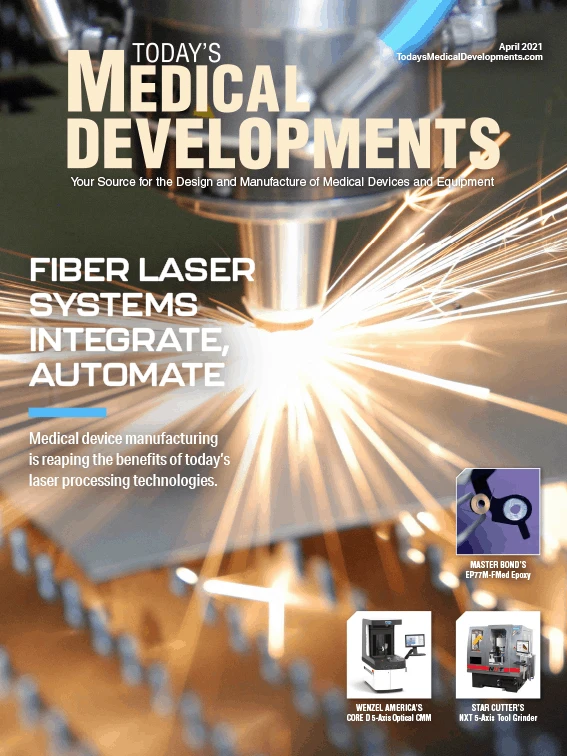
Reliable, intelligent sensors are the backbone of predictive maintenance. By capturing critical performance data – changes in temperature, vibrations, position, pressure – manufacturers gain a better understanding about the condition of their machines, reducing potential risk. Real-time information allows them to see trends and quickly react to avoid failures that could lead to costly, disruptive downtime and wasted labor.
As factories transform digitally and autonomously, demand for these devices is vastly growing to prevent these issues and enable proactive maintenance. Along with that demand is the increasing expectation that sensors will be fast, accurate, and durable, as more factories seek continuous production and efficiency.
Next-generation, data-driven solution
The need to capture multiple types of measurement in extremely small packages is pushing the development of multi-sensing elements, including TE Connectivity’s 830M1 embedded piezoelectric (PE) triaxial accelerometer. The advanced, embedded device senses acceleration to monitor machine health where wide bandwidth, small size, low power, and robust performance are essential. The accelerometer’s superior resolution provides a reliable solution for long-term, stable, and accurate performance for industrial condition monitoring applications in harsh environments. Its fully hermetic, leadless chip carrier (LCC) package allows the printed circuit board (PCB)-mountable sensor to measure acceleration in X, Y, and Z in a single package, rather than three, reducing the envelope and lowering costs.
“These sensors give you an endless amount of data, which not only helps the factory run 24/7 but improves the efficiency of the machinery because you can continually adjust the parameters,” says Bjorn Ryden, director of product management at TE. “It increases productivity by minimizing downtime and it helps address workplace safety.”
During development, TE focused on key parameters and design components to ease continuous condition monitoring, providing information to guide better decision making to operate in harsh environments. The central technology element in the 830M1 is the internal PE sensing technology, offering superior frequency response, measurement resolution, long-term stability, and minimal long-term drift. PE requires no power, and signal conditioning (charge to voltage conversion) can be provided within a device with very low current requirement.
“This is a proven, reliable technology,” Ryden says. “The key benefit is the wide bandwidth or frequency response. It also has superior measurement resolution as the 830M1 offers up to 15kHz bandwidth of frequency response. Together with a measurement resolution, that enables the end user to ascertain very early failure modes in high-speed applications.”
The earlier the shop-floor worker can detect a problem, the less expensive the repair solution is going to be.
Future sensor technology
Ryden predicts that Industrial Internet of Things (IIoT)-enabled factories will continue to be the main driving force for sensor adoption and capabilities, making devices more accurate and robust. As a result, manufacturers will achieve improved quality, visibility, and control of their production.
Advances in sensor technologies will also continue to make predictive maintenance more feasible and affordable. Easier installation, miniaturization, and wireless sensing will drive costs down in the future. As the factory floor becomes more connected, additional pieces of equipment and applications will require multiple sensors in a small footprint. This will push further sensor miniaturization while also lowering power requirements. In addition, machinists will rely more on wireless solutions for retrofitting existing equipment and achieving a high return on investment (ROI).
Another evident trend is increased sensor fusion. This includes using multi-sensor integration and having everything connected on the factory floor to capture multiple types of measurements, creating strong, reliable data output.
“The 830M1 really is a combo sensor. It is a triaxial vibration sensor, but it also has an internal resistance temperature detector (RTD) that offers a temperature output,” Ryden adds. “The end user has the option to read both temperature and vibration from that sensor.”
As IIoT becomes more secure, improving the safe transfer of critical data, sensor fusion should accelerate. In turn, this will enhance remote operating capabilities.
There’s also a growing need for smarter sensors to process and interpret large quantities of data. This space is evolving as we move into a more connected world.
Implementing intelligence and machine learning on the sensors is only in the early stages, but Ryden expects to see shifts as industry enters the next phase of the evolution of IIoT factories.
“We consider ourselves vital to addressing this market and the evolving market for sensor fusion and artificial intelligence (AI),” Ryden says. “And we will continue to partner with our customers and work together with ecosystem partners to solve these challenges and develop our next generation of sensors that we can then tailor to these needs.”
TE Connectivity
https://www.te.com

Explore the April 2021 Issue
Check out more from this issue and find your next story to read.
Latest from Today's Medical Developments
- Arcline to sell Medical Manufacturing Technologies to Perimeter Solutions
- Decline in German machine tool orders bottoming out
- Analysis, trends, and forecasts for the future of additive manufacturing
- BlueForge Alliance Webinar Series Part III: Integrate Nationally, Catalyze Locally
- Robot orders accelerate in Q3
- Pro Shrink TubeChiller makes shrink-fit tool holding safer, easier
- Revolutionizing biocompatibility: The role of amnion in next-generation medical devices
- #56 Lunch + Learn Podcast with Techman Robot + AMET Inc.





